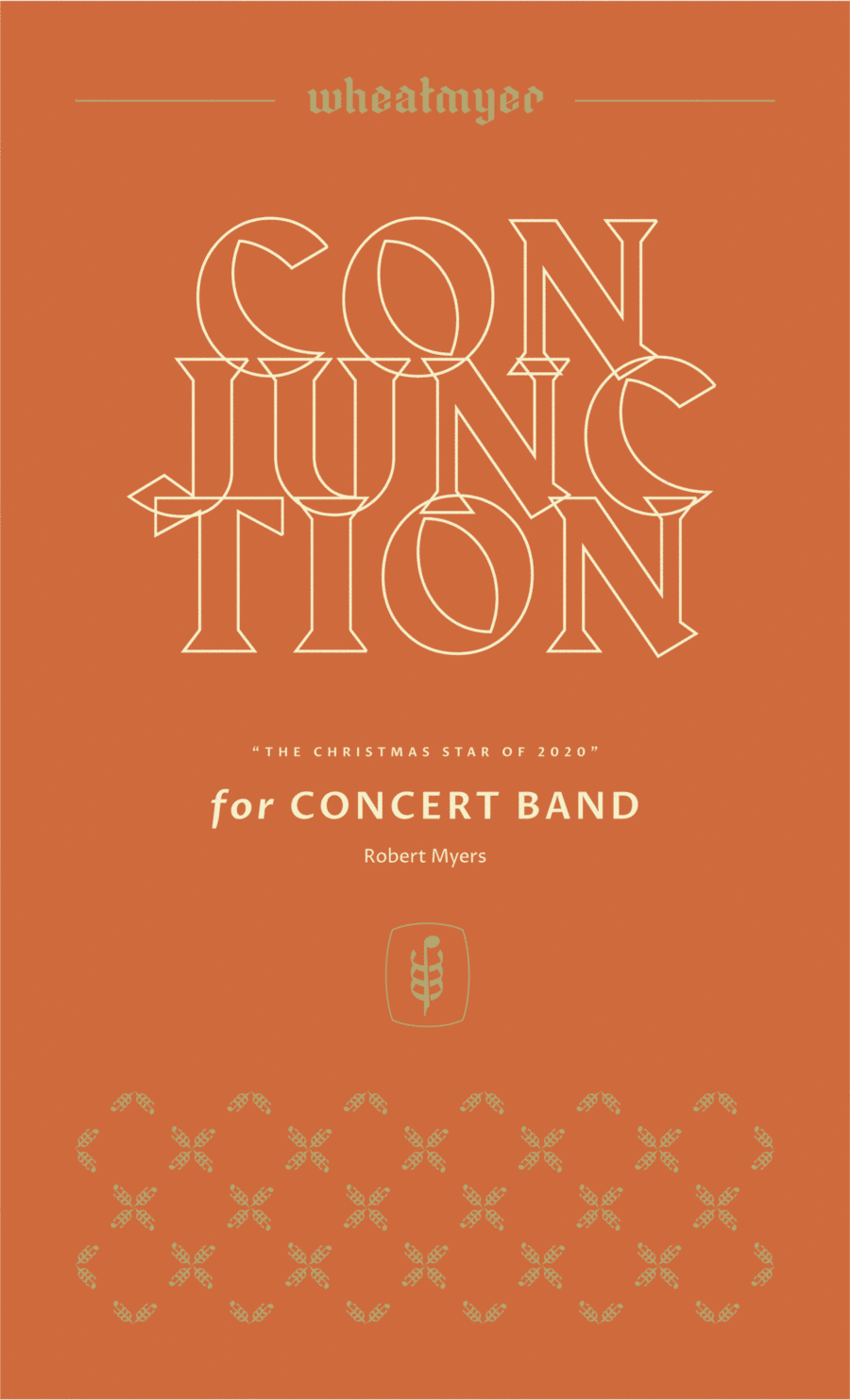Full Orchestra - Level 3 - Digital Download SKU: A0.976734 Composed by Robert Myers. 20th Century,Christmas,Contemporary. Score and parts. 99 pages. WheatMyer Music #6496769. Published by WheatMyer Music (A0.976734). CONJUNCTION interprets the convergence of Jupiter and Saturn near the end of the year 2020 as a celestial metaphor for the good news of Christ's birth in a replay of the Star of Bethlehem. Hence, its subtitle of The Christmas Star of 2020. The music, along with narration from selected Old and New Testament scriptures, delivers a message of hope amid the turmoil and chaos of current times.It's written for smaller concert bands hungry for challenging music. Ample cues and doubling allow for flexible instrumentation while mixed meters, varying tempos and textures, and interesting solo lines provide opportunities for strong players to shine. CONJUNCTION is also available with strings for orchestra.PROGRAM NOTES:2020 is widely characterized for its maladies: murders, burning cities, riots, a pandemic, economic shocks, and political turmoil. For some of us, it also held personal tragedy such as my brotherâs passing from COVID. But, 2020 also brought a sign of hope, namely the celestial phenomenon known as the Great Conjunction of 2020. For earth-bound observers, this was the closest approach of Jupiter and Saturn in almost 400 years as they appeared to almost touch in the early evening sky to produce the most brilliant evening star of our lifetimes. The occurrence of the event in November-December neatly coincided with the Advent season, peaking just before Christmas Day. One could hardly fail to note the parallels with the Christmas star of Matthewâs gospel which gave the conjunction its alternate name, the Christmas Star of 2020. Thus, this star spoke, to those with ears to hear, the same message the prophet Isaiah wrote about the coming Messiah, The people that walked in darkness have seen a great light. This star thus served to remind us that the LORD has not rejected us; He will show His favor again; His love has not vanished; His promises have not failed; He has not forgotten to be merciful or compassionate; and we are called to remember His mighty deeds (Psalm 77). CONJUNCTION: The Christmas Star of 2020 is inspired by these particulars.For the music, I looked to Gustav Holstâs The Planets for themes that would portray Jupiter and Saturnâs pas de deux. I selected several motives from the corresponding movements mixed and matched in sometimes easily recognized quotations and other times in heavily camouflaged derivations. An exuberant polyphonic passage recaps themes from both Jupiter and Saturn when the music resolves from uncertainty into hopefulness. While Holstâs motives provide CONJUNCTIONâs foundation I also used Handelâs Messiah for transitory and climactic material. You will hear his The people who walked in darkness have seen a great light in transitions and a short trombone solo. And a re-harmonization of the opening line from For unto us a child is born brings the music to a joyous climax.Although the music stands firmly on its own, I elected to incorporate some narrative to make the musical sentiment explicit. In a commentary on 2020âs grim events, I took adaptations of Habakkuk 1:2-4 and 2 Tim 3:1-4 and set them over Saturnâs plodding and ominous harmonies. Contrasting replies shimmer with hope as the narration melds Isaiah 9:2 and Luke 1:78-79 over another Saturn motive set against pitch sets from Jupiterâs main hymn theme. Still, itâs the music that tells the story of the Christmas Star of 2020.Please visit my website for a complete score preview: https://wheatmyermusic.com/conjunction-the-christmas-star-of-2020I feel somewhat guilty making claim to this music as almost all the building blocks are taken from other composers. But the end result is neither a medley, nor an arrangement, rather it is something clearly new, so I call it my own with deep respect to those giants on whose shoulders I stand.Robert MyersS.D.G.
